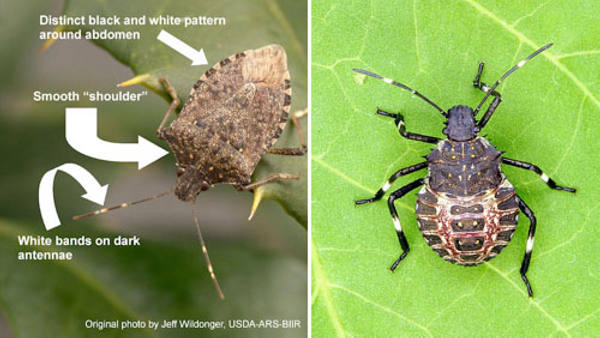
A growing concern over the proliferation of a new pest across the U.S. not only has farmers concerned from coast-to-coast but has prompted USDA to rank the pest as its top invasive insect in the nation.
The brown marmorated stink bug (BMSB) has spread to more than 39 states since being first detected on U.S. soil in 1998 at Allenton, Pennsylvania. Originating in Asia, it is considered a common pest in China, Japan, Taiwan and Korea. But BMSB is a greater problem for U.S. agriculture because natural predators and parasites can’t help to keep populations in check and so far common pesticides used in the U.S. seem to do little in controlling the spread of the pest.
USDA entomologists are calling the stink bug a major threat to orchard fruits, garden vegetables and row crops with the most serious infestations so far reported in Pennsylvania, Delaware, Maryland, Virginia, and West Virginia where high concentrations of the bugs threaten apples, peaches and other fruits.
Texas AgriLife entomologists say the stink bug is a “good traveler” and is known to move about rapidly over long distances by hitchhiking. Both an indoor and outdoor pest, the stink bug was first discovered in Texas last year by a pest control technician who identified it residing in a winter traveler’s recreational vehicle in Corpus Christi. The stink bug infested RV belonged to a winter visitor from Pennsylvania.
“We’re working to raise awareness about the brown marmorated stink bug in Texas,” said Bill Ree, AgriLife Extension entomologist at College Station. “This pest is hitting some states hard. Adult [stink bugs] seeking overwintering sites tend to get in recreational vehicles and travel trailers.”
Ree said the pest can cause lasting foul smells in homes and other confines, plus cause major damage to a wide variety of crops and plants.
“So far, we’ve only had one confirmed in Texas,” Ree said
AgriLife officials say while the sole stink bug uncovered on the coast was found indoors, they expect others already may be within the state and theorize Texas pecans and fruit groves in the Valley could be major targets for the pests.
Identifying the pest
The stink bug is a member of the insect family Pentatomidae and known as an agricultural pest in its native Asia. Adults are approximately 17 millimeters long (25 millimeters equals one inch) and are shades of brown on both the upper and lower body surfaces. They are the typical “shield” shape of other stink bugs, almost as wide as they are long. To distinguish them from other stink bugs, look for lighter bands on the antennae and darker bands on the membranous, overlapping part at the rear of the front pair of wings. They sport patches of coppery or bluish-metallic colored puntures (small rounded depressions) on the head and pronotum. The name “stink bug” refers to the scent glands located on the dorsal surface of the abdomen and the underside of the thorax.
The eggs are elliptical, light yellow to yellow-red with minute spines forming fine lines. They are attached, side-by-side, to the underside of leaves in masses of 20 to 30 eggs.
While extremely difficult to control, USDA entomologists say they have discovered a new method of combating the pests. Scientists at the Agricultural Research Service (ARS) Invasive Insect Biocontrol and Behavior Laboratory in Beltsville, Maryland, are searching for ways to control the stink bug by deciphering its genetic toolkit, studying the pheromones it releases, and evaluating potential attractants for use in commercial traps.
Science Daily is reporting ARS chemist Ashot Khrimian at the Beltsville lab led a team of scientists that identified an "aggregation pheromone" that shows promise as an early-season attractant. When released by the male stink bugs when they feed, the pheromone attracts males, females and nymphs to feeding sites. When mixed with other structurally related chemicals called stereoisomers, the pheromone is relatively simple to synthesize and can be used in traps to capture the pests.
Scientists are also looking for genes that might make the stink bug vulnerable to biopesticides or specific treatments that won't harm beneficial insects. Also, they are currently working with scientists at Baylor College of Medicine in Houston to sequence the stink bug's genome, which will tell scientists about genes critical to the stink bug's survival and may give them new ways to control the pest.
About the Author(s)
You May Also Like




